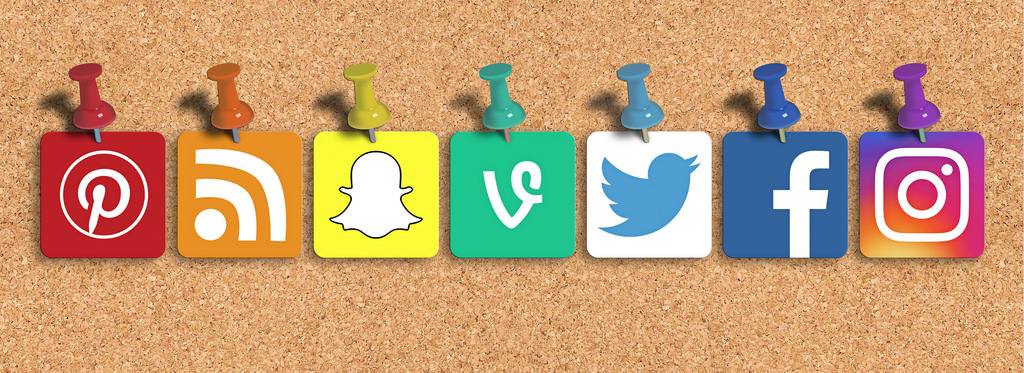Alice Keeler (@AliceKeeler) made a statement about social media recently on Twitter that really got me thinking. She said:
“100% of our students will interact with social media in their life. How do our assignments reflect that?”
After years of thinking and teaching on how to warn students about the dangers of social media, I suddenly realized that I was doing a disservice to them. Social media is an important part of their lives, and just covering the “don’ts” isn’t really helping them. Instead, we need to embrace the use of social media in the classroom where we can model the best ways for it to be used and allow our students the freedom to incorporate it into their own learning.
Incorporating Social Media into Your Classroom
Of course, just blindly asking students to get on their favorite social media platform and start using it is probably asking for problems. Here are some ideas that will allow them to learn the best practices of social media while still mastering the required content and staying safe online.
Practice Before Going Online – Even young students can enjoy and learn from posting to social media. But start them offline first. Create a “Twitter wall” (or other similar social media) on a blank wall. Then, using Post-It Notes, have students take turns Tweeting out about what they learned that day and “posting” on the wall. It’s especially effective if the wall is outside the classroom where other students can read the Tweets. Allow students to reply to the Tweets that are posted.
You can extend this idea by having students pretend to be a literary character from a book they are currently reading, a famous scientist, or a historical figure. As this other person, the students will fake Tweet out in character. You can use Twister or this template to create these fake Tweets or continue using Post-It Notes. Of course, this same activity can be used for any social media platform that the students are using.
Review the Pitfalls – It is necessary that we go over the possible dangers of using social media badly with our students. Topics to be discussed include:
- Cyberbullying (what it is, how to protect yourself from it, how to report it)
- Privacy (how and why to keep personal information safe)
- Scams (how to spot fraudulent content on social networks and the potential consequences of falling for these schemes)
- Information Permanence (have students Google themselves to see what is already out there about them)
There are lots of good digital literacy curriculum resources available to use in covering these concepts. Here are just a few:
- Digital Citizenship Curriculum by Common Sense Education
- Interland online digital citizenship game from Google
- Beat the Thief: Identity and Internet Safety Curriculum
- Social Media Curriculum
- A Student’s Guide to Using Social Media Safely
- “Think Before You Post” activities
 Practice More in a Safe Environment – Before throwing the students to the social media wolves, allow them to practice online in safety. For example, you can set up Edmodo as a “Facebook type” discussion board for literature classes. Or use another avenue that allows students to chat and comment on stories and current events that connect with their assignments. Have them use a back channel like Todays Meet so that they learn what is appropriate to post and what isn’t. Try Twiducate, a free microblogging site similar to Twitter, but aimed at elementary and secondary school students. Get students blogging and commenting on each other’s blog writings.
Practice More in a Safe Environment – Before throwing the students to the social media wolves, allow them to practice online in safety. For example, you can set up Edmodo as a “Facebook type” discussion board for literature classes. Or use another avenue that allows students to chat and comment on stories and current events that connect with their assignments. Have them use a back channel like Todays Meet so that they learn what is appropriate to post and what isn’t. Try Twiducate, a free microblogging site similar to Twitter, but aimed at elementary and secondary school students. Get students blogging and commenting on each other’s blog writings.
Share Together – Create class accounts for popular sites like Facebook, Twitter, and Instagram. Assign a “reporter of the day” each day or week to keep the public informed about the learning happening in the class via posts. Or ask each student to create a Twitter account (last names discouraged) that they will use for academic purposes. Then assign quick homework activities via the account and ask them to respond. Get them involved with other student Tweets by having a Twitter chat around a common book they are reading or a topic they are studying.
View Social Media as Just Another Tool in Your Tool Bag – As you design learning activities for students, remember to include some that involve social media. Have them create concept maps about a topic using Pinterest. Film short videos using apps like Vine or Dubsmash to address new concepts or historical events. Post a poll about possible choice activities using Twitter. Use social media sites to follow trending stories, uncover new research, or watch news unfold in real time. Create an account on GoodReads and have students review literature that they are reading.
Students will not learn to be social media savvy on their own. It is up to us to help them develop skills that will keep them safe while they are connecting and sharing.

